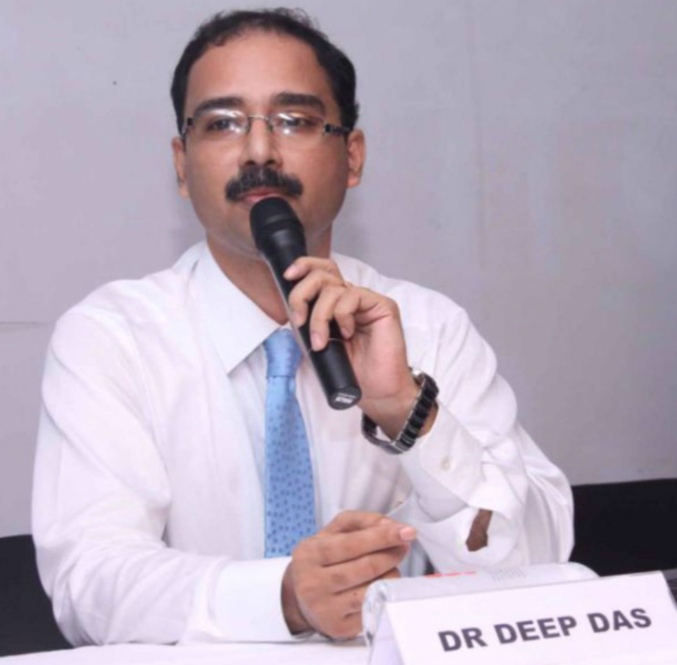
– Dr. Deep Das
## Introduction Stroke has emerged as one of the foremost health challenges in the 21st century, contributing significantly to the global disease burden. This condition, characterized by the sudden disruption of blood flow to the brain, leads to substantial morbidity and mortality worldwide. As we delve into the next decade, it becomes essential to recognize the rising tide of strokes, especially in countries like India, where the incidence is increasingly affecting the younger generation. This demographic trend poses a critical challenge not just to health systems, but also to the socio-economic fabric of the nation. Managing strokes efficiently is imperative as India strives for growth potential, particularly at a time when its youth holds the key to its economic future.#
# The Global and Indian Disease Burden of Stroke Globally, strokes account for approximately 11% of total deaths, making it the second leading cause of death after ischemic heart disease. With the World Health Organization reporting that stroke deaths are projected to rise, countries need to prioritize effective prevention and treatment strategies. In India, the burden is particularly alarming; the number of stroke cases is increasing at an unprecedented rate, including among individuals in their 20s and 30s. Recent studies indicate that India has one of the highest rates of stroke incidence among younger adults. This trend poses dire implications for the country, where a significant portion of the population falls within the working age group. As stroke affects people in their most productive years, the potential loss to the economy in terms of productivity and healthcare costs is staggering. With young individuals being the backbone of India’s economic growth, the rising case of strokes not only threatens their health and quality of life but also jeopardizes the nation’s economic trajectory.
## Recognition of Stroke Symptoms: The BEFAST Acronym Timely intervention is vital in stroke management, and recognizing the symptoms early can significantly enhance survival and recovery prospects. The BEFAST acronym serves as a valuable tool for individuals to identify stroke symptoms quickly and effectively: – **B** – **Balance**: Sudden loss of balance or coordination. – **E** – **Eyes**: Sudden trouble seeing in one or both eyes. – **F** – **Face**: One side of the face drooping or an uneven smile. – **A** – **Arms**: Inability to raise one or both arms equally. – **S** – **Speech**: Slurred speech or difficulty speaking. – **T** – **Time**: If any of these signs are observed, it is crucial to call emergency services immediately. Educating the general public about this acronym can empower communities to act swiftly when stroke symptoms arise. Quick action can prevent further brain damage, making it necessary for public health initiatives to focus on awareness campaigns that disseminate this knowledge effectively.
## Importance of Prompt Treatment in Stroke-Ready Hospitals In managing stroke, the importance of taking patients to stroke-ready hospitals cannot be overstated. Facilities equipped with comprehensive resources, including CT scans and intravenous thrombolysis (IVT) capabilities, are critical in ensuring timely diagnoses and treatments. The sooner a stroke is diagnosed, the faster treatment can be administered, thereby dramatically improving outcomes. Only specialized stroke centers can provide the essential services needed for optimal care. The capacity for immediate CT imaging allows healthcare professionals to accurately differentiate between ischemic stroke and hemorrhagic stroke, guiding treatment decisions. Moreover, the ability to administer IV thrombolysis can dramatically improve survival rates, particularly when delivered within the critical early hours following symptom onset. Therefore, timely transportation to appropriate medical facilities is crucial.
## Advancements in Stroke Therapy Recent advancements in stroke therapies have provided hope for patients facing this daunting condition. The introduction of newer agents like tenecteplase for intravenous thrombolysis has streamlined the process, allowing for quicker administration and improved efficacy. Tenecteplase acts rapidly to dissolve clots, greatly enhancing the chances of recovery when used promptly. Additionally, the development of mechanical thrombectomy techniques for treating large vessel occlusions has revolutionized stroke management. This procedure allows for the mechanical removal of clots from the brain’s major arteries, significantly improving outcomes for patients suffering from severe ischemic strokes. Studies have shown that patients treated with thrombectomy within a stipulated time frame experience markedly better recovery rates, further solidifying the need for rapid access to specialized care. Timely treatment interventions not only save lives but also improve the quality of functional recovery. The more promptly a patient receives appropriate care, the greater the likelihood of minimizing long-term disabilities. This underscores the necessity for awareness and early action in addressing stroke symptoms and ensuring swift medical intervention.
## Financial and Emotional Burden on Patients and Families The financial implications of a stroke extend far beyond the immediate healthcare costs. Families often find themselves grappling with exorbitant medical expenses, including hospital stays, rehabilitation, and ongoing therapy. According to recent estimates, many stroke survivors face significant long-term costs associated with their care, and the emotional burden correlates with financial strain, impacting the whole family dynamic. Transitioning a patient from a bedridden state to an ambulatory status can drastically reduce reliance on caregivers and family members, easing this financial burden. Improved rehabilitation outcomes equate to reduced costs associated with long-term care, thus enhancing the overall quality of life for stroke survivors. Moreover, regaining independence not only alleviates financial pressure but also restores dignity and emotional well-being moving forward.
## The Importance of Physiotherapy and Rehabilitation Physiotherapy is an essential aspect of post-stroke recovery. Engaging patients in tailored rehabilitation programs immediately following a stroke can significantly enhance physical outcomes. Physiotherapists play a crucial role in helping patients regain strength, coordination, and mobility, facilitating a return to their day-to-day activities. This early intervention is vital, as it can decrease the risk of complications such as pressure sores, joint deformities, and deep vein thrombosis. Furthermore, effective physiotherapy aids in restoring functional independence, allowing patients to transition from a state of dependency to self-sufficiency. The psychological benefits of such rehabilitation are immense—not only do patients regain physical capabilities, but they also rebuild confidence and optimism about their futures.
## Early Speech and Language Therapy Initiation Alongside physiotherapy, initiating speech and language therapy as soon as possible following a stroke is equally important. Many stroke patients experience aphasia or other speech-related challenges that hinder communication, affecting their ability to engage with loved ones and reintegrate into society. Early intervention by speech-language pathologists can help mitigate these issues. Intervention strategies may include exercises to improve articulation, language processing, and cognitive communication skills, all designed to enhance patients’ abilities to express themselves effectively. Research indicates that patients who receive timely speech therapy show greater improvement in communication skills, leading to increased social engagement, improved emotional health, and lower levels of frustration associated with communication barriers. Thus, integrating speech and language therapy into a comprehensive rehabilitation program significantly benefits the overall recovery process.
## Caregiver Burden and the Impact of Successful Stroke Therapies The burden on caregivers of stroke patients is often profound. Caregivers frequently navigate the emotional and physical toll of supporting a loved one through the recovery journey, often sacrificing their own health and well-being in the process. The stress associated with caregiving can lead to burnout, fatigue, and emotional distress, further complicating the caregiver’s ability to provide adequate support. Successful stroke reversal therapies can alleviate some of this societal burden. When patients show improvement due to effective treatments, caregivers experience reduced stress and are better able to maintain their own health and emotional balance. Empowering stroke patients to regain independence through timely and effective therapies not only enhances the quality of life for the patient but also bolsters the well-being of their caregivers. In this way, successful intervention has broader societal implications, improving family dynamics and community support systems.
## Appeal to Lawmakers Given the growing stroke burden in India and its serious implications for the nation’s health and economic stability, it is imperative that both state and central lawmakers take proactive measures to address this pressing issue. A crucial step towards mitigating the impact of strokes is to **democratize stroke therapy**. This can be achieved by reducing the costs associated with essential medical materials and treatments that are currently beyond the reach of the average citizen. Creating stroke-specific low-cost insurance schemes can make a significant difference in accessibility and affordability of treatment for the masses. Such initiatives would empower families to seek timely medical intervention without the burden of crippling financial strain. Increased funding and resources for public health awareness campaigns that educate communities about stroke symptoms and the importance of rapid treatment could pave the way for a healthier future. By prioritizing these critical issues, lawmakers can facilitate effective stroke management, improving health outcomes, and ensuring that India’s future generations are healthier, happier, and more productive members of society.
## Conclusion Stroke represents a major public health challenge that significantly impacts both individuals and families, particularly in a rapidly developing country like India. The rising incidence of strokes among the younger population underscores the urgent need for awareness, timely intervention, and comprehensive treatment options. Understanding the symptoms through the BEFAST acronym can empower communities to act swiftly when strokes occur. Advancements in treatment, particularly with the introduction of intravenous thrombolysis and mechanical thrombectomy, have revolutionized stroke care. Timely access to stroke-ready hospitals equipped with relevant technology can dramatically enhance recovery outcomes, easing the financial and emotional burden on families. Moreover, effective rehabilitation through physiotherapy and early speech therapy plays a crucial role in support for patients and the caregivers who support them. As we step into the next decade, it is imperative that both healthcare policies and societal attitudes shift to focus on the prevention, treatment, and management of stroke as a critical health concern. By doing so, India can safeguard the health of its population and secure its economic stability for future generations.

